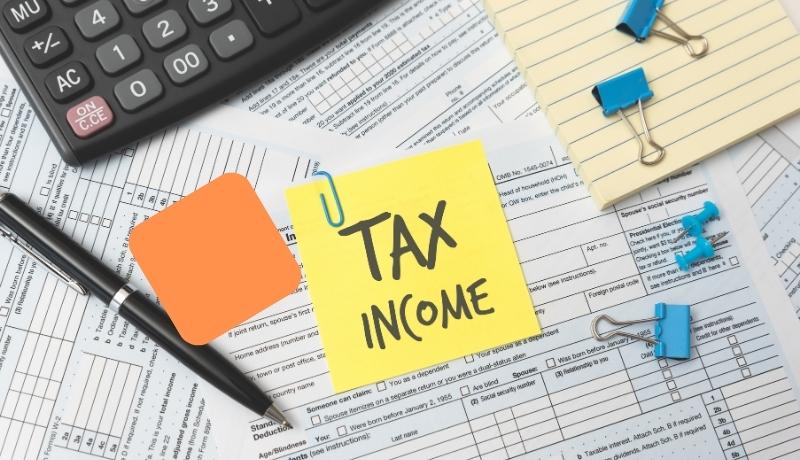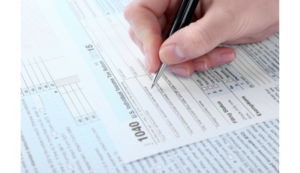The last step in filing your income tax return (ITR) is to verify it. If you have filed your ITR but have not verified it, then the return will not be considered valid according to income tax laws.
Once you have uploaded your ITR on the e-filing website, you get 120 days to verify your return. There are 6 ways to verify your income tax return. Out of these, five are electronic methods and one is a physical method.
These methods can be used only if you are filing tax returns which are not required to be audited, i.e., usually ITR-1, ITR-2 and ITR-4 for FY 2018-19.
However, if you are filing your tax returns which are required to be audited, then you have to verify it using the ‘Digital Signature Certificate’. Here are the six ways with which you can verify your ITR:
1. Via Aadhaar-based OTP:
To verify your ITR using the Aadhaar-based one-time password (OTP), your mobile number must be linked to Aadhaar and registered as such in the Unique Identification Authority of India (UIDAI) database and your PAN must be linked with Aadhaar.
Go to ‘My Account’, and click on ‘e-verify return’ and select the option, ‘I would like to generate Aadhaar OTP to e-verify my return.’ An SMS with the 6 digit OTP will be sent to your registered mobile number.
Enter the OTP received in the box where it is required and click on submit. On successful submission, your ITR will be verified. One must remember that the Aadhaar based OTP is valid only for 30 minutes.
If your mobile number is not linked to your Aadhaar, then there are other ways to electronically verify your ITR.
2. Generating EVC via Net-banking:
You can verify your ITR if you have availed the Net banking facility of your bank account. One must remember that only select banks allow you to e-verify your ITR. Also, before logging in to your bank account, ensure that you are not already logged in on the e-filing website. Your PAN must be registered with the bank as well.
To verify your ITR using Net banking facility, login to your bank account on the bank’s website. Select the e-verify option which is usually under the ‘Tax’ tab. You will be redirected to the e-filing website of the income tax department.
Click on the ‘My Account’ tab and select ‘Generate EVC’ option. A 10-digit alpha-numeric code will be sent to your email and mobile number. This code is valid for 72 hours. Now, go to the ‘e-verify’ option under the ‘My Account’ tab to verify your return.
Select the option ‘I have EVC already’. Enter the OTP that you have received on your mobile number registered with the bank. Click on ‘Submit’ and your ITR will be verified.
3. Generating EVC via bank account:
The income tax department allows you to e-verify your return using your bank account. This facility is available for select banks. You can check if your bank offers you this facility or not by accessing the list here.
To verify your ITR using your bank account, you must pre-validate it. Go to the profile settings in your e-filing account to pre-validate your bank account. Enter the required details such as your bank’s name, account number, IFSC code, and mobile number. You are required to enter your mobile number that is there is in the bank’s records.
The pre-validation will be successful only if your PAN and name match with the bank account records. Once pre-validation of bank account is done, select ‘Generate EVC’ option under the ‘My Account’ tab. A code will be sent to you on your mobile number. Select ‘e-verify’ in ‘My Account’ tab and enter the code.
One must remember that no change of mobile number or email as mentioned will be permissible without revalidation of the bank. This means that you cannot change the mobile number in your bank records through this exercise.
The mobile number mentioned by you to validate your bank account must be the same as mentioned in the e-filing website of income tax. If you wish to update the same in bank records, you are required to make a visit to your bank branch.
4. Verifying tax-returns through Demat account:
If you are a Demat account holder, you can use your Demat account to verify your ITR. This method is similar to the bank account based on ITR validation.
You must pre-validate your Demat account to verify your tax return. The pre-validation process is automatic and usually takes about 1-2 hours and if there is any error then it is communicated to you via email.
You can use your Demat account to generate EVC only after your details are validated by your depository. Go to ‘Generate EVC’ option and select ‘Generate EVC through Demat Account number.’ Enter the EVC received by you on your registered mobile number to successfully verify your ITR.
Remember, here, too, you cannot change your mobile number or email ID without revalidating it with the depository.
5. Generating EVC through your bank ATM:
The income tax department offers the facility to generate code through selected bank ATMs. This facility is available for selected banks only. Currently, only customers of six banks are allowed to avail this facility.
To generate EVC, visit your bank’s ATM and swipe your ATM card. Click on the ‘Pin for Income Tax filing‘. An EVC will be sent to your registered mobile number. This EVC is valid for 72 hours. Log-in to your e-filing account on the income tax website.
Go to the ‘e-verify returns’ option. Select the ITR to verify it and select the option ‘Already generated EVC through bank ATM’. Enter the EVC and your tax return will be verified. You must remember that if you have verified your ITR using any of the electronic methods mentioned above, you are not required to send ITR-V to the income tax department.
6. Sending signed ITR-V/Acknowledgement receipt:
If you cannot verify your ITR using any of the electronic methods mentioned above, then you can send a signed copy of ITR-V (Acknowledgement receipt) to the department. If you wish to send ITR-V for verifying your tax return, remember the points below.
a) ITR-V is a one-page document which must be signed in blue ink. It must be sent either via ordinary post or speed post. You cannot courier ITR-V.
b) Address of CPC Bangalore for speed post: ‘CPC, Post Box No – 1, Electronic City Post Office, Bangalore – 560100, Karnataka, India’.
c) You are not required to send any supporting document along with the ITR-V.
d) You will receive an intimation via SMS on your mobile phone and email ID once your ITR is received by the tax department. This intimation is only for receipt of ITR-V, the intimation for processing of tax return is separate.
Want to get your own Article Published? Do send us your article at taxeffectsofficial@gmail.com or alternatively send your story to our Facebook Inbox facebook.com/taxeffects.
Disclaimer: The information contained in this website is provided for informational purposes only, and should not be construed as legal/official advice on any matter. All the instructions, references, content, or documents are for educational purposes only and do not constitute legal advice. We do not accept any liabilities whatsoever for any losses caused directly or indirectly by the use/reliance of any information contained in this article or for any conclusion of the information.









